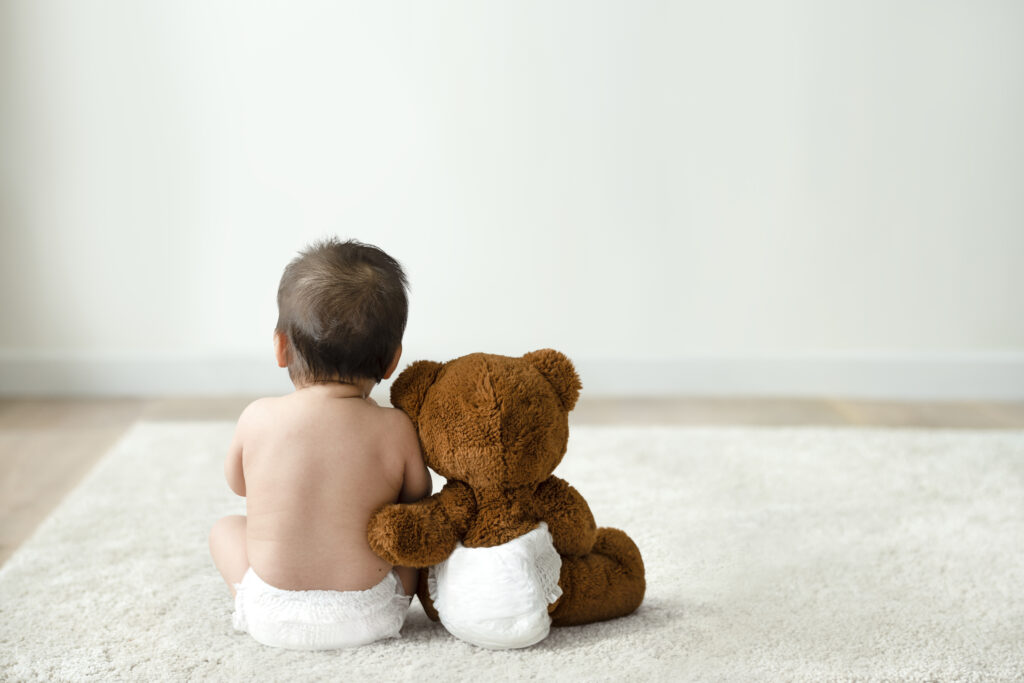Last Updated on 1 year by David Bergmann
Moving with a baby or toddler requires a lot of stamina and also a bit of organizational talent. Preparations for the move should therefore start as early as possible to save you and your family unnecessary stress. Find out here how to make a move with the little ones go smoothly!
- Moving with a baby – when is the right time?
- Moving tips: How to arrive safely at your new home!
- Getting your child used to the new environment
1. Moving with a baby – when is the right time?
Children are generally very flexible and adaptable and quickly get used to a new environment.
The younger the child, the fewer difficulties can be expected. Older children who already go to kindergarten or school may be sad that they have to leave their friends behind.

Babies, especially infants, have only just arrived in the world and are beginning to find their bearings. Caregivers are usually the parents, perhaps the grandparents. A new apartment or house shouldn’t be a problem as long as mom and dad are nearby.
It is therefore advisable not to put the move on the back burner, as far as professionally and financially possible, but to move with the baby sooner rather than later in order to avoid adjustment difficulties.
However, changing with a newborn or very young baby should be avoided. Because the first weeks and months are already stressful enough and a move shortly after the birth means additional stress for mother and child. They are important for getting to know each other and finding a common routine. Once this phase is complete and the young family has settled in well, nothing stands in the way of a move!
2. Moving tips: How to arrive safely at your new home!
Organization and planning are essential when moving, especially if children are involved. In any case, you should plan enough lead time to take care of all the formalities and pack the boxes in peace.
Moving house with a baby or toddler will probably never be completely stress-free, but there are a few things that can make it easier:
Labeling the moving boxes
Make a note of the exact contents (it’s best to attach a list), the room for which the box is intended and mark important boxes (e.g. those with baby things) in a conspicuous color (e.g. red “P” for priority).
Maintain rituals
It is important for babies and infants to have a regular daily routine that ensures they get their meals and naps regularly. Even if it’s not always easy in the hustle and bustle of changing, try to keep to your rituals. The usual afternoon nap or bottle in the evening should not be missed on moving day either.
Pack your emergency kit
For minor and major incidents, it is advisable to pack an extra bag or moving box containing all the necessary items for the little ones: Diapers, wipes, pacifier, bottle, baby food, spare clothes, medicine, favorite stuffed animal, blanket and burp cloths. The older the baby/toddler, the more toys you should have on hand to keep them occupied and distracted!
Furnish the children’s room first
It is important for older babies and toddlers to find familiar things in their new home. Ideally, you should pack your own box with your child’s favorite toy and place it directly in the new nursery. Your baby will be kept busy straight away and will also find familiar things in the new environment.
Babysitter for the moving day
Whether it’s a grandparent, aunt or another trusted person – a babysitter is worth their weight in gold in the midst of hectic and chaos! If the baby is still very small and needs to be breastfed frequently, you could instead organize a removal helper to take care of the moving tasks while you look after the baby.
Childproofing your new home
If your baby can crawl or even walk, you should childproof your new home before you move in:
- Secure sockets
- Attach edge protection (e.g. for furniture)
- Attach stair gate
- Secure windows and balcony doors (e.g. lockable handles)
- Store cleaning products and medication out of reach
Request vacation
When moving with children, it is advisable to request more vacation days than too few. You may even be entitled to special leave; it is best to clarify this directly with your employer.
3. Getting your child used to the new environment
Even though babies and toddlers can adapt very quickly to their new surroundings, they may miss their familiar four walls, the familiar smells and the playground around the corner.

The following things can help prepare your child for the upcoming move:
- Show your child your new home and their nursery before you move in.
- Set up a cozy corner in the new apartment with stuffed animals and a cuddly blanket to which familiar smells stick
- Go to the nearest playground together or go shopping at the supermarket opposite.
- Have a taster day together in the new crèche or kindergarten
If your baby or toddler is old enough, they can help with the unpacking and you can decorate the new nursery together.

Leave a Reply